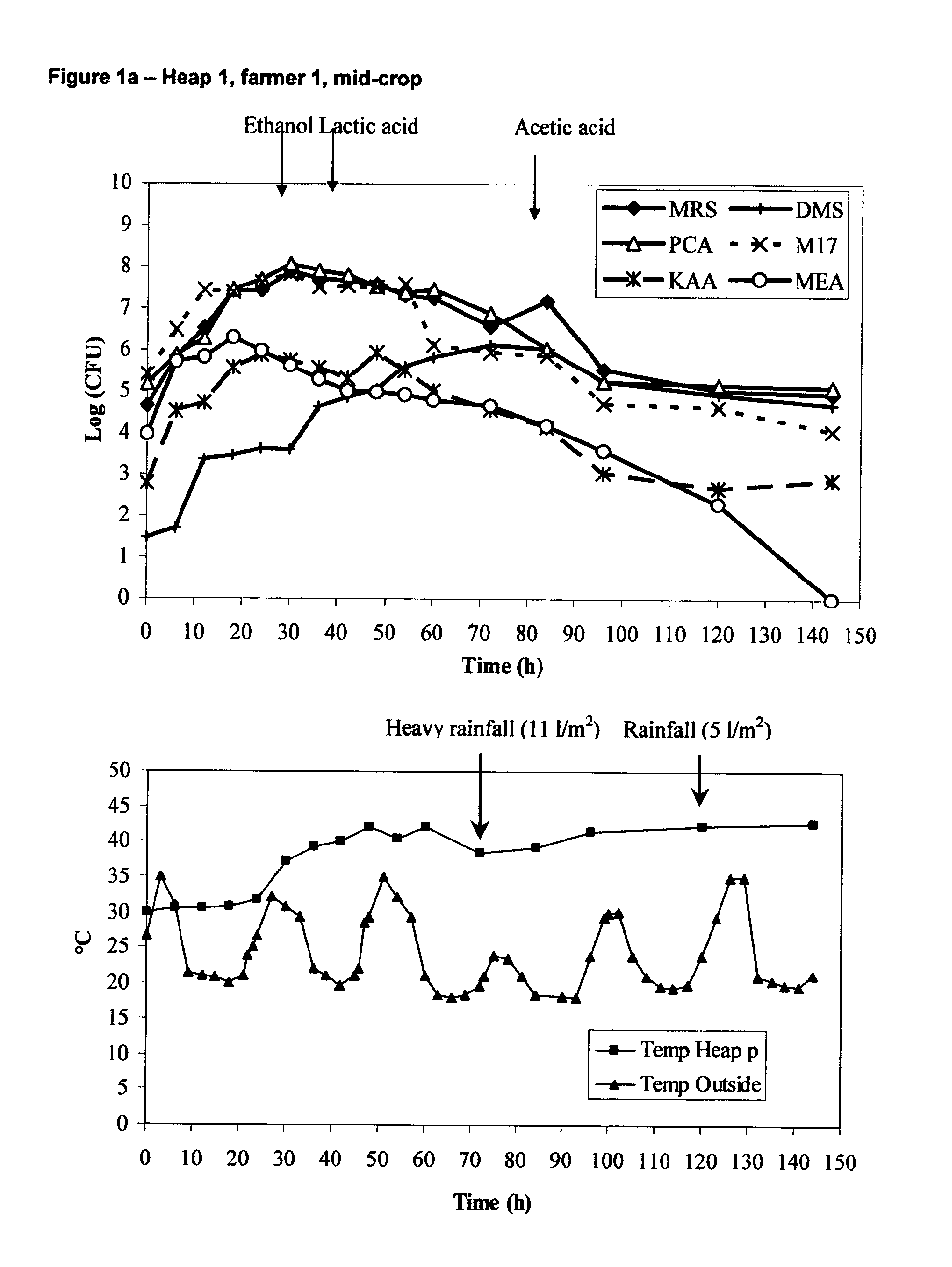Starter Cultures and Fermentation Method
a technology of starter cultures and fermentation methods, applied in the field of organic material fermentation, can solve the problems of death of seed embryos, inhomogeneous spontaneous cocoa fermentation process, and large variation in both microbial counts and species composition, and make reproducibility of fermentation particularly difficul
- Summary
- Abstract
- Description
- Claims
- Application Information
AI Technical Summary
Benefits of technology
Problems solved by technology
Method used
Image
Examples
example 1
Dynamics and Biodiversity of Lactic Acid Bacteria and Acetic Acid Bacteria Populations Involved in Spontaneous Heap Fermentation of Cocoa Beans
experiment 1
1. Experiment 1
Population Dynamics
[0152]The population dynamics of spontaneous, natural cocoa bean fermentations were studied in the field: seven heap fermentations at two different locations (location 1: fermentations 1, 3, 4 and 6; location 2: fermentations 2, 5 and 7) during mid-crop June-July 2004 (fermentations 1, 2 and 3) and main crop October-November 2004 (fermentations 4, 5, 6 and 7), six days each, followed by drying during 10-14 days depending on the weather; both by cultivation-based enumeration and culture-independent methods. Also, ambient temperature and temperature of the fermenting beans in the heap as well as pH and rainfall were monitored on line. An example of this is shown in FIG. 1 (A, heap 1, farmer 1, mid-crop and B, heap 4, farmer 1, main-crop).
[0153]Cultivation media used were: Plate Count Agar (PCA) for the total bacterial count (37° C., 1-4 days); Malt Extract Agar (MEA) with 100 mg / l of oxytetracycline for yeasts (37° C., 1-4 days); Deoxycholate-Mannitol...
experiment 2
2. Experiment 2
[0167]The following example illustrates a study of a Ghanaian cocoa bean heap fermentation process by a multiphasic approach, encompassing both microbiological and metabolite target analyses. A culture-dependent (plating and incubation, followed by rep-PCR analyses of randomly picked up colonies) and culture-independent (denaturing gradient gel electrophoresis of 16S rRNA amplicons, PCR-DGGE) method revealed a limited biodiversity and targeted population dynamics of both lactic acid bacteria (LAB) and acetic acid bacteria (AAB) during Ghanaian cocoa bean heap fermentation. Four main clusters were found among the LAB identified: Lactobacillus plantarum, Lactobacillus fermentum, Leuconostoc pseudomesenteroides, and Enterococcus casselliflavus. Other taxa encompassed for instance Weissella. Only four clusters were found among the AAB identified: Acetobacter pasteurianus, Acetobacter syzygii-like, and two small clusters of A. tropicalis-like. Particular strains of L. plan...
PUM
 Login to View More
Login to View More Abstract
Description
Claims
Application Information
 Login to View More
Login to View More - R&D
- Intellectual Property
- Life Sciences
- Materials
- Tech Scout
- Unparalleled Data Quality
- Higher Quality Content
- 60% Fewer Hallucinations
Browse by: Latest US Patents, China's latest patents, Technical Efficacy Thesaurus, Application Domain, Technology Topic, Popular Technical Reports.
© 2025 PatSnap. All rights reserved.Legal|Privacy policy|Modern Slavery Act Transparency Statement|Sitemap|About US| Contact US: help@patsnap.com



